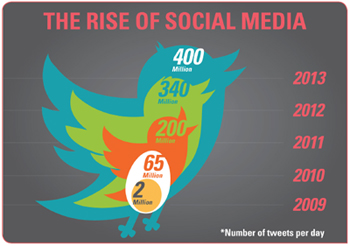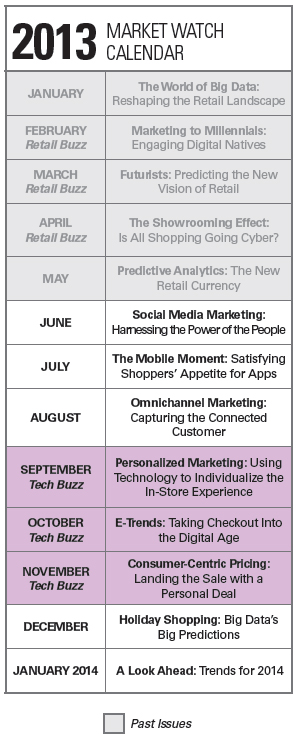
Though social networking is often seen as a somewhat frivolous, leisure-time activity, the reality is that the hundreds of millions of social media connections that occur on these sites every day represent significant potential opportunities for retailers and CPGs to make—or lose—customers. The meteoric rise of the integration of social media into our daily lives has not only changed the way we communicate and interact with each other, but also what, where, how and when we shop, as well as how we interact with brands and retailers. As Mark Zuckerberg, co-founder and CEO of Facebook, noted at a press conference announcing the launch of Facebook Social Ads, “When someone [becomes a fan of your brand on social media], that becomes a trusted referral…. [And] nothing influences people more than a recommendation from a trusted friend.” Getting into the social media scene is no longer a matter of being seen as “cutting edge” or “tech-savvy.” It’s increasingly becoming a vital component of protecting and growing the bottom line.
While social media grows in leaps and bounds every day, retailers and CPGs have been slow to fully embrace these technologies to drive their marketing goals. According to a survey by eMarketer, in 2012, only 12 percent of grocery retailers were using social media sites for marketing purposes. However, the tide is turning, with 65 percent of grocery retailers reporting they plan to grow their social media marketing presence over the next 5 years.
The challenge of building an effective social media presence begins with choosing from the myriad of networks available, including Facebook, Google+, Twitter, Pinterest, MyStorey, Yelp, Foursquare, LevelUp, Instagram, YouTube, LinkedIn and Blogster, just to name a few. Not all are created equal in their reach. For example, a 2012 survey by BlogHer, a leading blog publishing network, found that nearly 50 percent of female Pinterest users had gone on to make a purchase based on recommendations from other Pinterest users, as compared to only about 33 percent of women on Facebook or Twitter. In addition, each platform has its own nuances that affect how shoppers perceive and interact with retailers and brands. For example, a recent study by the Farsite Group, a data science research firm, suggested that fans of retailer corporate Facebook pages (such as “Grocery Mart USA”) are more likely to make online purchases, while fans of individual local store pages (such as “Grocery Mart Store #143”) are more likely to shop in the store.
Progressive retailers and CPGs are turning to Big Data to help them choose the best network(s) to grow their brands. With the right tools in place, organizations can analyze data from Facebook posts, tweets, blog posts and other social media exchanges to gather a variety of insights—for example, from which social media networks feature the most activity related to their brand or similar brands to which sites users in their targeted geographic or demographic audience spend most of their time on.
This type of data mining can also be used to monitor and respond to social media mentions in real-time, giving consumers the kind of personalized service and intimate connection they are increasingly coming to expect from companies. For example, Nestle has replaced many of its surveys, samplings, focus groups and other more “traditional” research tactics with a 24/7 social media monitoring center. Special software allows Nestle to cull through social media data around the world in real time to look for pre-defined consumer sentiments, and alert customer service staff members, when needed, so they can respond to customers immediately. Since implementing this robust new program in 2011, Nestle has jumped up seven spots to become one of the top ten most reputable companies in the world, according to a survey by the Reputation Institute.
Another tactic showing great promise in the world of social media marketing is the use of geolocation tracking to target consumers with highly relevant, real time offers. For example, retailers can set up a system to be alerted if a person “checks-in” or tags a photo of him- or herself at a restaurant or even a competitor nearby, at which point they can offer up a coupon or other deal to entice the person to come to their store. Overlaying this with other posts, tweets and check-ins from the same person can help retailers further refine their offers. For example, a 23-year-old single man who regularly posts photos of his favorite pubs might receive a 25 percent off offer for a 6-pack of beer, whereas a mother who regularly tweets about her new baby girl might receive a coupon for diapers.
“Brokers, grocers and manufacturers who proactively engage and influence consumers online gain a tremendous competitive edge,” said Jesse Edelman, chief marketing officer for BeaconUnited, a national grocery broker, in a recent interview with Progressive Grocer. A well-planned and well-executed social media plan can allow retailers and CPGs to influence consumers at all touch points along the decision-making journey—from when they’re first considering brands, to when they’re actually making a purchase, to when they’re sharing their experience with others. But above all, what retailers and CPGs must understand is that this platform is not the same as the one-size-fits-all, set-it-and-forget-it print mediums of yore. Social networking is a fluid and dynamic medium. Retailers and CPGs that fully embrace social media and commit to investing the resources and talent necessary to harness its true potential stand to reap the greatest rewards.


